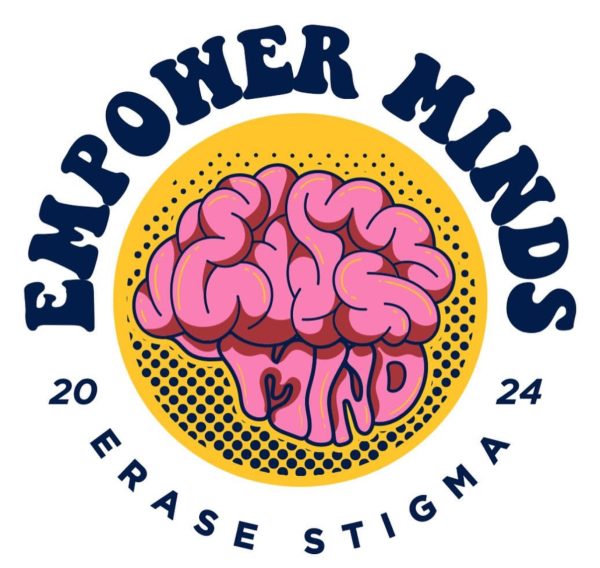Sex ed changes coming to Texas in 2020-2021 school year
We all dread it—the talk. And no, I am not talking about the conversation you have with your middle school boyfriend when “it’s not you…four square at recess is just my priority right now”; I mean the other talk. Although it may be something you want to tune out during a health course you only took because the class is required to graduate, sexual education can save lives—but that is only if it is taught correctly. After several years of remarkably high teen pregnancy rates, the Texas Board of Education realized that the “just around the corner” video alone was not cutting it. So what mistakes led up to this policy update? What does this update in the curriculum mean? What does society have left to accomplish to properly educate young teens?
Coach Carr in Mean Girls wasn’t too far off with how sexual education is taught, in fact, he was almost spot on when compared to Texas’ curriculum—“Don’t have sex, [be]cause you will get pregnant and die…just don’t do it. Promise?” Texas’ past sexual education curriculum based their teachings around abstinence only and a lack of requirements regarding the teaching of birth control. These requirements disregard the reality that, according to the CDC, over half of the United States’ population has had sex by the time they turn eighteen. In 2018, Power To Decide reported that Texas ranks in the top ten list for teenage pregnancies in the United States, tying with New Mexico and Tennessee for number seven.
Without early information on how to avoid pregnancy, young teenagers are left with unreliable methods such as “the pull out” method, and are unaware of different birth control resources such as birth control pills, IUDs (intrauterine device), condoms, the birth control shot, and the morning after pill. After interviewing a handful of peers, it was made clear that without these crucial school resources, youth are left at risk, as not one of them knew that the morning after pill can be bought without parental consent or a guardian present as a minor in Texas. Personally, the only pregnancy prevention education I received as part of my education in Texas was a video on how young women had to give up any future they had planned as well as their passions due to an unplanned pregnancy. No sources on how to prevent this, and no other options were taught except “drop everything and have this child”. Not only is this dangerous to physical health, as the bodies of many young women are not equipped to carry a child, but the lesson was emotionally harmful, as clips played of bright young women stating they were in sports and had exceptional grades but had to put their lives on hold in order to become a mother, as if a woman’s only option and purpose is to carry a child.
Unplanned teen pregnancies are just one of many issues that Texas’ lack of requirements surrounding education on contraceptives and abstinence based teachings are to blame for. Abstinence based education does not include crucial information such as how to prevent sexually transmitted infections, or when, where, and how to get tested. The most up to date report by the American Sexual Health Association reveals that almost twenty million new sexually transmitted infections occur each year in the United States alone, and the most sinister part is that half of these cases are youth ages fifteen to twenty four. Despite the overwhelming spread, a survey by health scientist, Kendra M, Cuffe uncovered that only twelve percent of youth were tested in 2016. Fortunately, in Texas, minors do not need a parent or guardian’s permission or acknowledgement to receive testing and treatment for sexually transmitted infections. Furthermore, many treatment and testing centers such as Planned Parenthood can help minors set up forms of communications safely that are completely confidential from a parent, as well as offer financial aid opportunities. However, even with a variety of options present to ensure safe sex, many teens do not get tested. This is due to unawareness of this information, as well as a lack of education on how STIs can remain dormant or asymptomatic for years while spreading to others you have intercoourse with. In some cases, they can eventually result in AIDS.
After more than two decades, the Texas Board of Education took a step closer in the path of changing this vicious cycle. On Nov. 20, the New York Times reported that “Texas’ Board of Education voted Friday to make major changes to the state’s sex education standards, expanding the teaching of birth control beyond abstinence-only education for middle school students.” Additionally, in 2022, educators in public schools will be permitted to teach youth in seventh and eighth grade about birth control methods, as well as how effective each method is in preventing infection and pregnancy. Adults overlooking the curriculum were not the only ones who raised attention to the former curriculum’s flaws, but students as well. The Woodlands High School student, Rohail Jafri, states that “from middle to high school we weren’t given any substantial sex ed[ucation], nor were we educated in feminine hygiene— even when I took the health course, sex was brushed aside to preach abstinence.” Additionally, Lindsey Seale, The Woodlands High School student, shares similar feelings of dissatisfaction with the curriculum as she says: “The Texas health curriculum is all about fear mongering. It’s based on outdated beliefs, [and] besides the most recent change, they haven’t updated the standards since 1997. It’s proven that abstinence-only teaching doesn’t do anything. It doesn’t prevent sex. It doesn’t lower abortions. I know of women who have almost died during home abortions because they were taught to be ashamed of getting pregnant. Young girls will get pregnant, by their means or not. But teaching them to hide themselves, hurt themselves, or to birth the child at all costs, is only detrimental. It may help the Texas board’s ego, but it hurts young women in Texas greatly.”
This upcoming revision is an incredible change towards the right direction in keeping teens safe; however, Texas still has a long way to go. On Nov. 18, the Austin American Statesman reported that the updated curriculum for 2022 will not include information on gender identity, sexual orientation, or even the utmost necssity when it comes to having sex—consent. However, not all hope is lost, as recent events have shown that the voices of youth have the power to incite the needed improvements in the future.
Congratulations! You have officially made it through “the talk”, and if you feel awkward, don’t worry. Thanks to the recent curriculum update, every young Texas teen in coming years will have the opportunity to share this experience as well.
Your donation will support the student journalists of The Woodlands High School. Your contribution will allow us to purchase equipment and cover our annual website hosting costs.






